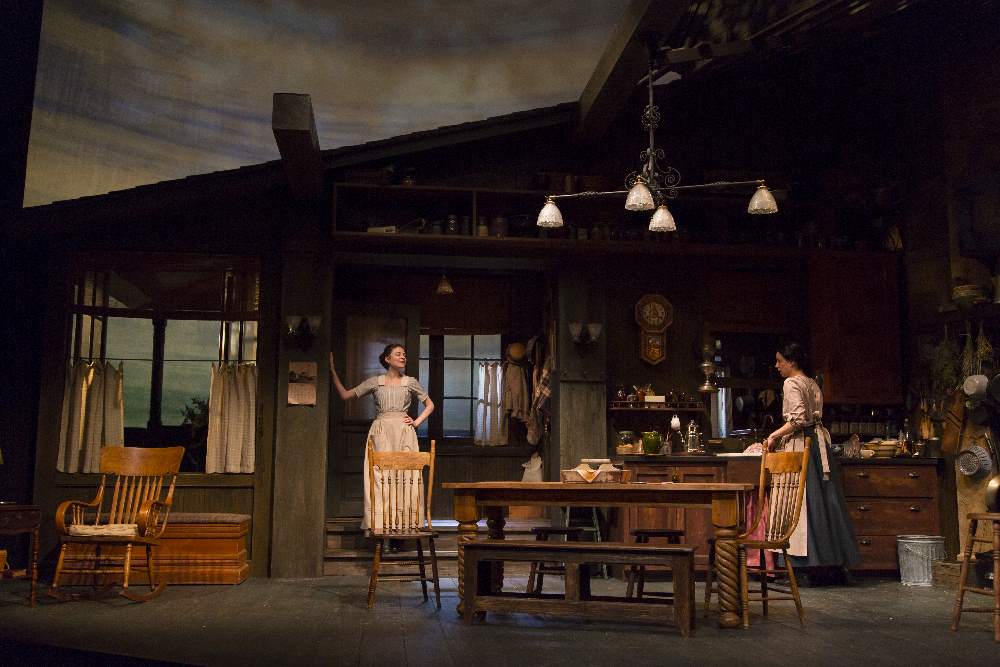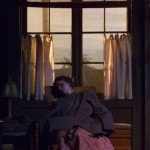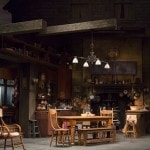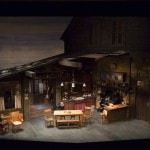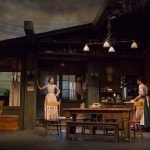Every month, American Theatre goes behind-the-scenes on the design process of one particular production, getting into the heads of the creative team. This month’s contender: The Second Girl by Ronan Noone at Huntington Theatre Company.
Did you ever wonder what the Tyrone family’s servants were thinking as Eugene O’Neill’s Long Day’s Journey into Night played out? The Second Girl by Ronan Noone answers that question by telling the story of those invisible figures as they clean, iron and cook (real food) over the course of that long day.

Campbell Scott, DIRECTION: Ronan Noone is a friend from years ago, when I did his one-man play The Atheist. He sent me this play because it’s obviously a sister play to O’Neill’s Long Day’s Journey, in which I had acted, and Ronan was interested in my take. When I met with Santo [Loquasto], I told him two things: I needed the set to be practical, and it needed to be workable—the actors had to be able to actually cook and do everyday things.
We got most of the props from the Huntington—our intention was to populate the set with things that were practical and usable. Santo said, “You’ve got some great things in Boston, and I have some great things in my basement.” So these boxes kept appearing at rehearsals—a crucifix would turn up, some china and silver. And 90 percent of the things that he sent, we used.
Usually this is not my thing. When I go to movies and plays that are overly period in design, it drives me crazy—I suddenly get taken out of what I’m watching. For some reason, in this case, we applied what I may have thought was hitting the audience over the head with period, but it made the play just sing. The characters were cooking real meals, ironing, washing clothes. People were saying afterwards, “I felt like a voyeur, like I really was watching a real day with these people.” All these small details ultimately accumulated into something that was very powerful and original.

Santo Loquasto, Set & Costume Design: The play takes place in the day of Long Day’s Journey, only it’s the backstairs aspect—the stiff world of the cook and Kathleen (who is the “second girl,” the only character who appears in both plays). I’ve done Long Day’s Journey several times [including on Broadway]. I felt that it was important that these characters acknowledge the presence of the Tyrone world. That’s why I took the perspective of the kitchen tied into the back of the house, from which you can see the second story—you see the shadow of Mary Tyrone moving against the window shade. This creates a real sense of the tragic world of the main house, contrasted with the both comic and slightly tragic world of the serving staff in the house below.
It was also important to have a sense of the outdoors—sky and fog and night, and the passage of an entire day from dawn to dawn. It’s a play where the routine of cooking and domestic responsibility is the real rhythm. It’s a beautifully executed set in terms of the shop-work—the plumbing, and the fact that the stove is functioning. And it’s full of knives. The idea was to have things sharp enough to function but hopefully not dangerous. The performers were making bacon and burning a chicken and baking beans and serving them. It wound up being easier to use real food rather than create food that wasn’t real—although I’m sure the crew is sick of chicken by now. I had a few slices of chicken when I was there, and it was very tasty [Laughs].
The Second Girl by Ronan Noone is at Boston’s Huntington Theatre Company Jan. 16–Feb. 21 under the direction of Campbell Scott. The production features production design and costume design by Santo Loquasto, lighting design by James F. Ingalls, sound design by Ben Emerson, and stage management by Katie Ailinger and Jeremiah Mullane.

